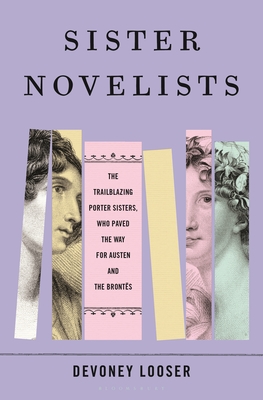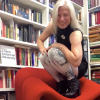Ten Books Later, a Loft Student Returns Home

Growing up in White Bear Lake in the 1970s and ’80s, I was an aspiring writer, although I had few solid ideas about how to begin. None of my relatives were authors, and no one in our extended Minnesota family had yet earned a bachelor’s degree. But not long after I arrived as a scholarship student at Augsburg University, someone on the faculty—perhaps the late John Mitchell, a poet—encouraged us to go to an event at the Loft. I learned that my dorm was just a few blocks away from a renowned literary center.
To get there, we crossed the pedestrian bridge over Interstate 94. The Loft’s then-home was in an ivy-covered former church on Franklin Avenue, a space it shared with The Playwright’s Center. Readings were held on the building’s main floor, with the Loft’s classrooms and offices in the recently renovated basement. By the time I graduated with a BA in English in 1989, I’d come to feel as much at home at the Loft as I did at Augsburg. Both shaped me profoundly, although I haven’t acknowledged before my debt of gratitude to the Loft. It’s long overdue.
Before I found the Loft, becoming a writer often felt out of reach, despite my ritual teenage re-readings of Brenda Ueland’s If You Want to Write. At the Loft, I eventually learned that writers didn’t belong to some glamorous club of inimitable geniuses. They were real, flawed, and often funny people—a very important realization for a starry-eyed, shy young person. More importantly, the Loft’s events and classes taught me how sustaining it could be to belong to a community of writers. It was exhilarating to put words on a page, in an ungraded environment, with people who were serious about wordsmithing together.
I still felt starstruck, which only makes sense when you learn the names of the writers with whom I interacted. Those who visited or hung out at the Loft during that period were giants, including Carol Bly, Robert Bly, Rita Mae Brown, Michael Dennis Browne, James Fenton, Diane Glancy, Judith Guest, Patricia Hampl, Maxine Kumin, Denise Levertov, David Mura, Tim O’Brien, and Yevgeny Yevtushenko. But feelings of intimidation usually didn't last long for me, because between 1987 and ’89, I attended virtually all of the Loft’s weekly events. That’s because I was employed there in a very fortunate part-time job as House Manager.
I was entrusted with a set of keys to open the space and set up the wooden folding chairs for the reading. I managed volunteers selling tickets (in exchange for free admission), set up wine and cheese receptions, cleaned up, and locked up after everyone left. It meant that, except for the short periods in which I had to duck out to tally ticket sales and attempt to arrange crackers and napkins semi-artfully on a buffet table, I got paid to listen to literary luminaries read their work. My job at the Loft seemed impossibly lucky, though it was occasionally disheartening to learn which writers couldn’t be bothered to throw away their own trash.
Mostly, though, I was positively inspired, leaving with my mind on fire and a renewed determination to put pen to paper. I’m not exactly sure why I was hired, but I suspect one thing that appealed to Loft Director Susan Broadhead was that I lived so close by. I could be counted on to show up to open the building and manage things, even in a blizzard—which did happen once or twice, of course! The job’s irregular Friday and Saturday night shifts put a damper on my ability to go on dates, but even then that seemed a sensible tradeoff for such an incredible literary immersion.
Perhaps I’m reflecting now on the meaning of these experiences because last fall I published my first biography, Sister Novelists: The Trailblazing Porter Sisters, Who Paved the Way for Austen and the Brontës (Bloomsbury). It’s the story of two eighteenth-century sisters, who, with no more than a charity school education, went on to become celebrated novelists, pioneering the modern historical novel before gradually (and wrongly) falling out of literary history. (An excerpt from the book was published in Smithsonian Magazine) My work was made possible by a Guggenheim Fellowship, an NEH Public Scholar Award, and a Rockefeller Bellagio Fellowship. Dozens of librarians provided access to thousands of unpublished Porter family letters, allowing me to piece back together the sisters’ never-before-told, and often dramatic, private stories. My writing this book absolutely depended on the support of hundreds of people, over the course of two decades.
Some parts of the lives of Jane and Anna Maria Porter resonated with me personally—two ambitious, white English girls raised by a poor, uneducated, and widowed mother. In their teens and early 20s, the sisters joined a community of progressive London intellectuals, poets, and artists. These early connections laid the foundation for their celebrated careers. They went on to publish 26 books, separately and together. Although I couldn’t hope to publish 26 books, or have the sisters’ impact, Sister Novelists was my tenth. Writing this biography prompted the realization that it was transformative to have joined a community of writers in my early 20s. The Loft in the 1980s had functioned for me as literary London did in the 1790s for the Porter sisters.
I live in Arizona now, returning to Minnesota just once or twice a year. I’ll be back again for a February 16th book tour event at Magers and Quinn, in conversation with my fabulous former Augsburg professor, the fiction writer, prose poet, and journalist Cass Dalglish. Anticipating that homecoming has me thinking of everyone affiliated with the Loft in 2023. I hope my story will lead you to deepen your own connections there or will encourage you, if you have the means, to donate to the Loft’s work. It’s an honor to count myself among those once affiliated with this extraordinary Minnesota institution. Although I’m now far away from the Loft, in miles and years, I continue to feel its impact on my writing. I’m also grateful to have learned from its model community where to point today’s aspiring writers looking for worthy places to begin or to grow.
